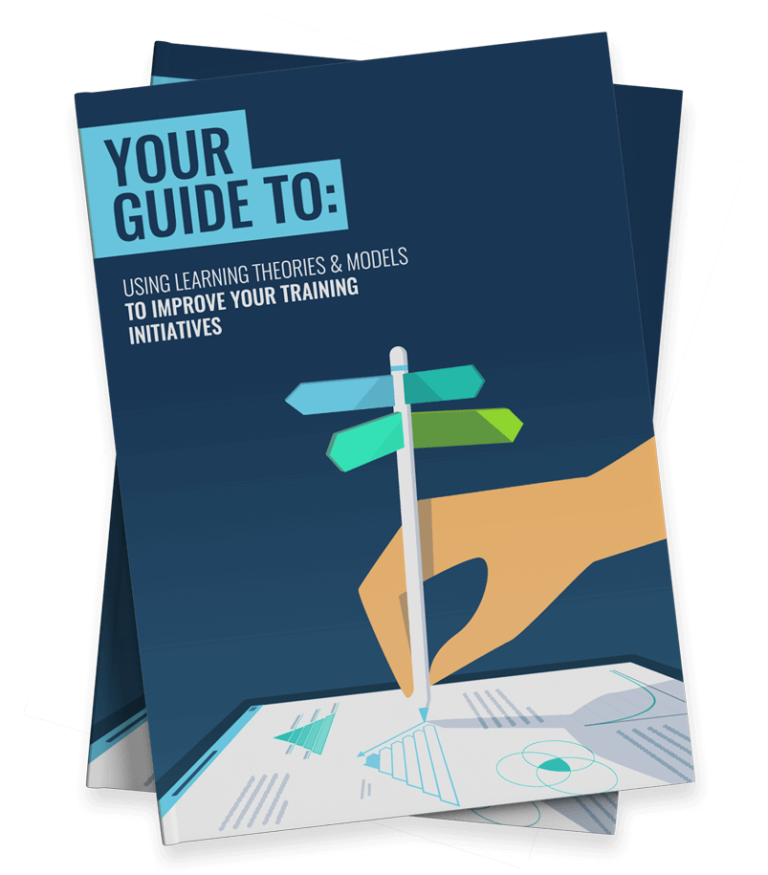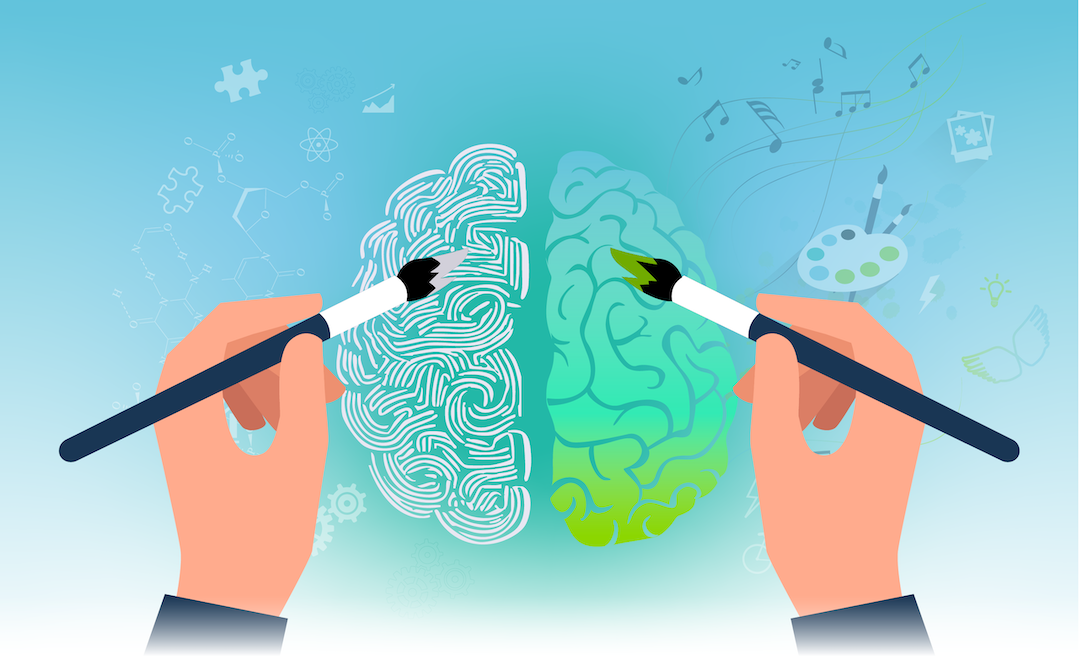Despite advances in neuroscience, the way we learn is still shrouded in mystery. Our pursuit of the most effective instructional methodologies remains ongoing. There is no indisputable ideal approach. Thankfully, learning models give us a structure by which we can understand this complex process and guidelines for successful instruction.
With this in mind, we’ve collected 12 of the most important learning models for your consideration. These are all models that have played pivotal roles in shaping modern instructional experiences.
That said, they are just guidelines rather than a strict set of rules. These models may not be scientifically proven, but they are based on rigorous research. Follow this link if you’d like to see how these models have impacted learning theories and instructional frameworks.
In this article, we’ll explore the principles and strategies linked to each model, how they can be applied and why they’re important. We’ll also link to an expanded article for each entry. But before we dig in, let’s define what a learning model is.
What is a Learning Model?
A learning model is a specific application or representation of a learning theory. As a result, it’s more concrete and practical. It usually incorporates clear theoretical principles or a structured framework for designing and delivering learning experiences.
This means learning models can provide useful guidelines and strategies for educators in a variety of different fields. Perhaps one or more of these models can help to set the strategy for your structured workplace learning initiative?
The 12 Learning Models You Have to Know
1. The Forgetting Curve
A stark reminder of how quickly we forget…
Hermann Ebbinghaus’s Forgetting Curve shows us how information is lost over time if you don’t make an effort to retain it. In the latter half of the 19th century, Ebbinghaus ran a series of tests on his own memory.
These tests saw him memorising nonsense syllables and repeatedly testing himself after various time periods. By plotting the results on a graph, he created the ‘Forgetting Curve’, as shown below.
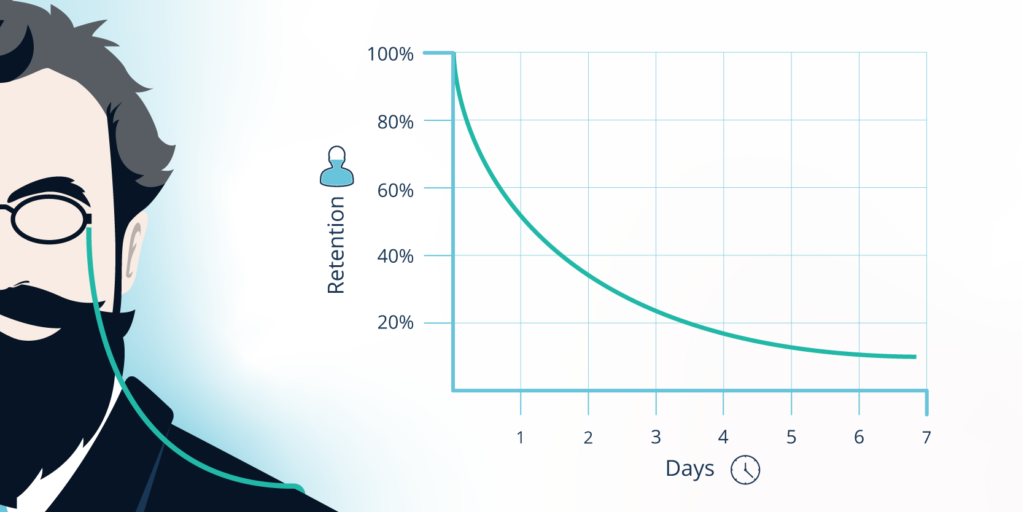
The curve shows us that information leaks out of our brains at an exponential rate. In fact, we forget…
- 50% of everything we learn within a day.
- 75% of everything we learn within 3 days.
- And 90% of everything we learn within a week.
But it’s not all bad news. Ebbinghaus was also able to demonstrate that every time you reinforce information, the rate of decline decreases. This shows us the importance of spaced repetition in a learning context.
2. Bloom’s Taxonomy
Unleashing better learning objectives and higher-level thinking…
Educational psychologist Benjamin Bloom devised the first version of his now-famous taxonomy in 1956. His aim was to place learning objectives within specific categories based on complexity.
These categories help us to understand the associated level of educational achievement linked to every learning task. The taxonomy was revised back in 2001 and is now structured as below.
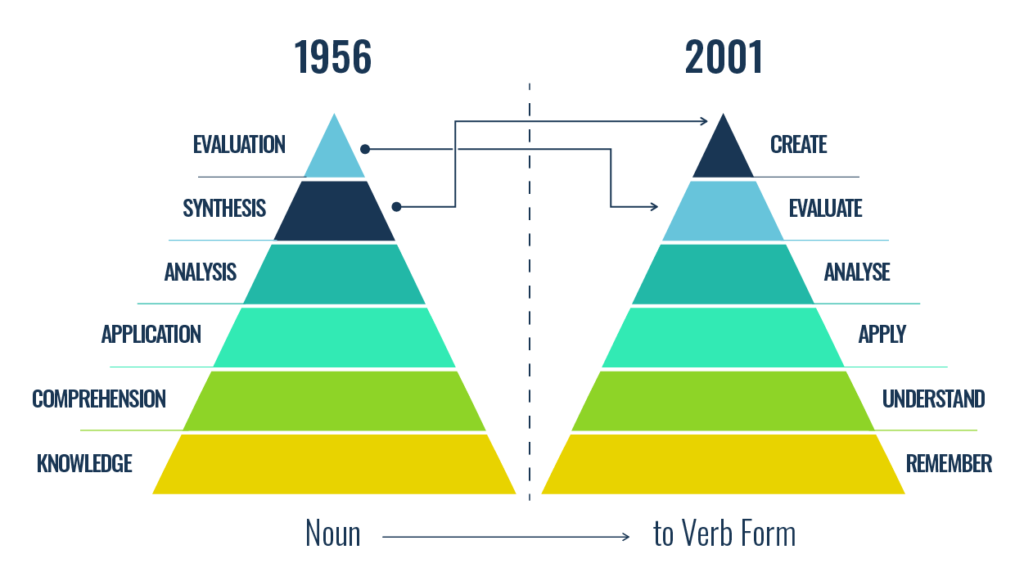
The taxonomy has a hierarchical structure. Students start with basic learning and move their way up through each level until they have mastered the subject at hand.
The learning experience becomes more active as they progress. What begins with rote memorisation ends with being able to use the information to create something new.
Bloom’s Taxonomy has a number of uses for teachers, instructors and corporate trainers. First and foremost, it allows you to assign learning objectives or tasks, based on your audience’s competency level.
In addition, we can also use the taxonomy to assess the level of our audience’s educational achievement over time.
3. The ADDIE Model
Designing success, one instructional journey at a time…
Creating compelling learning experiences requires an effective instructional design approach. ADDIE provides a framework to help instructional designers to structure their learning experiences in the right way.
It was first created by the US army back in the 1970s, as a way to guide their own learning programmes. Nowadays, ADDIE is also a common approach within the corporate learning sphere.
Indeed, despite its age, it’s still far and away the most common learning and development model. In fact, it’s the basis for over 100 spin-off models. How’s that for influence?
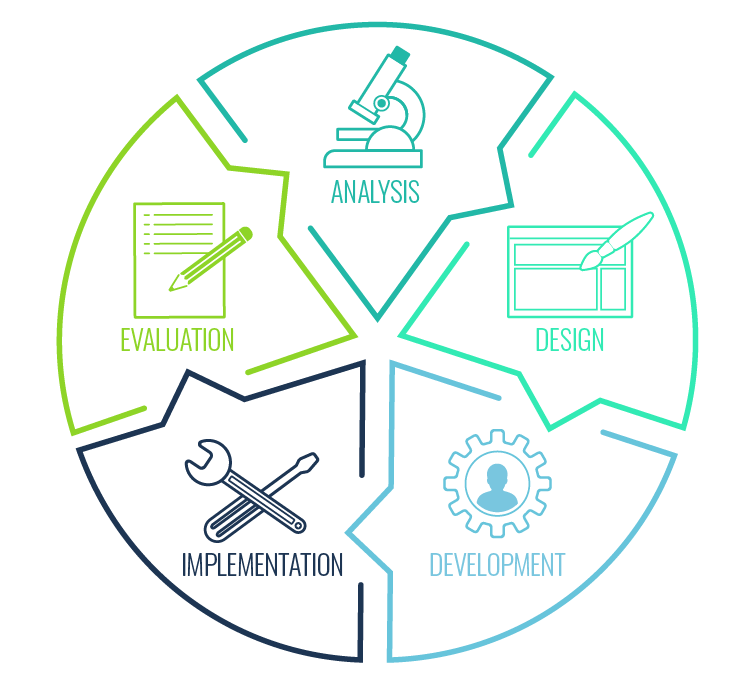
As you may have guessed, it’s an acronym. It stands for:
- Analysis: At this stage, you’ll need to analyse your training needs. This analysis will help you to understand your audience’s current competency level and skills gaps. You’ll then be able to set objectives accordingly.
- Design: Once the analysis is complete, you can start planning and designing your learning experience. You should keep your learning objectives at the forefront of your mind throughout.
- Development: With all that planning out the way, you can now gather your assets and get building. This may take some time, but if you’ve done your due diligence in the previous steps, it should come together relatively quickly.
- Implementation: Now that you’ve built the learning experience, it’s time to share it with your learners. Ensure you have a clear implementation plan and that your learning materials are easy to access.
- Evaluation: Finally, you should gather feedback relating to the learning experience. This will help you to evaluate how successful it has been. Take care to determine whether your audience feels the learning objective has been satisfied.
4. Maslow’s Hierarchy of Needs
Understanding how our needs impact our behaviour…
In 1943, Abraham Maslow published a paper called A Theory of Human Motivation. This paper contained his ‘Hierarchy of Needs’, a model that would transform the way we think about motivation and goal attainment.
The hierarchy is presented in a pyramid format, with five levels. The four lower levels are physiological needs. The fifth and topmost level is a ‘growth’ need. In order for our growth needs to influence our behaviour our lower level needs must first be satisfied.
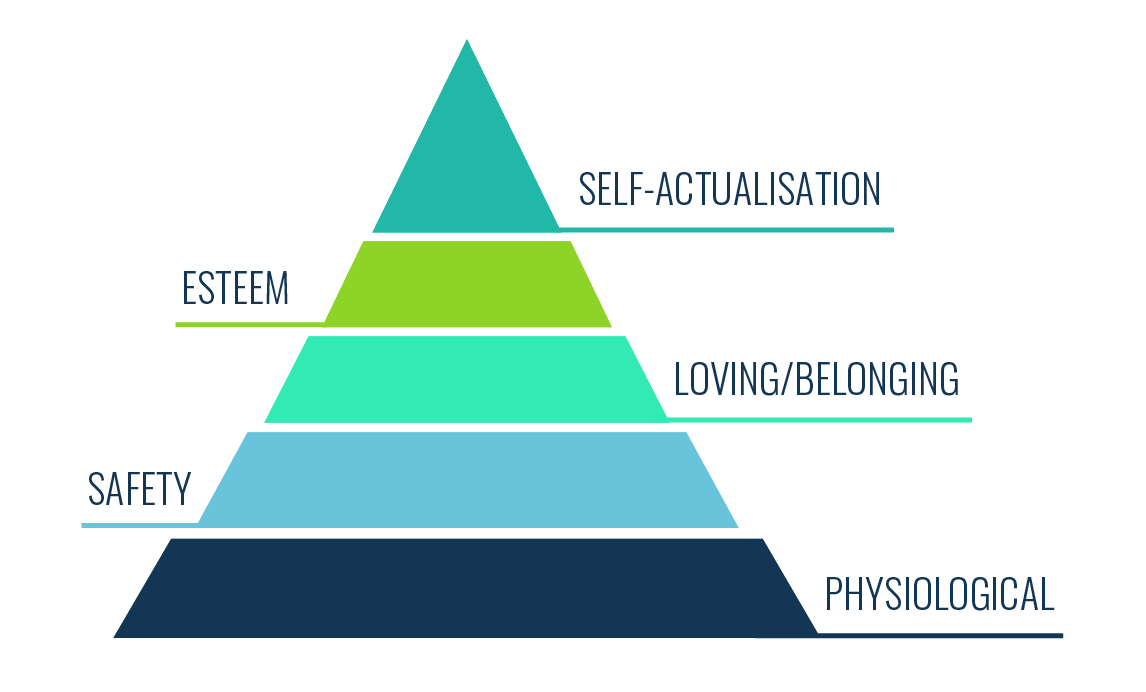
- Physiological: Our physical needs, such as air, food, water, sex and sleep.
- Safety: Our security needs, such as health, property and employment.
- Belongingness: Our love needs, such as family, friendship and romance.
- Esteem: Our status needs, such as self-esteem, achievement and confidence.
- Self-actualisation: Our purpose needs, such as morality, creativity and problem-solving.
Maslow’s hierarchy helps us to understand what drives our learners and enables us to prioritise accordingly. It also helps us to understand how physiological factors may affect our learners’ capacity for effective learning.
5. The VARK Model
Establishing your learners’ sensory preferences…
The VARK model was created by Neil Fleming and Colleen Mills in the late 1980s. It categorises different learning styles based on perceptual channels. It suggests that individual learners have preferences for how they like to receive and process information.
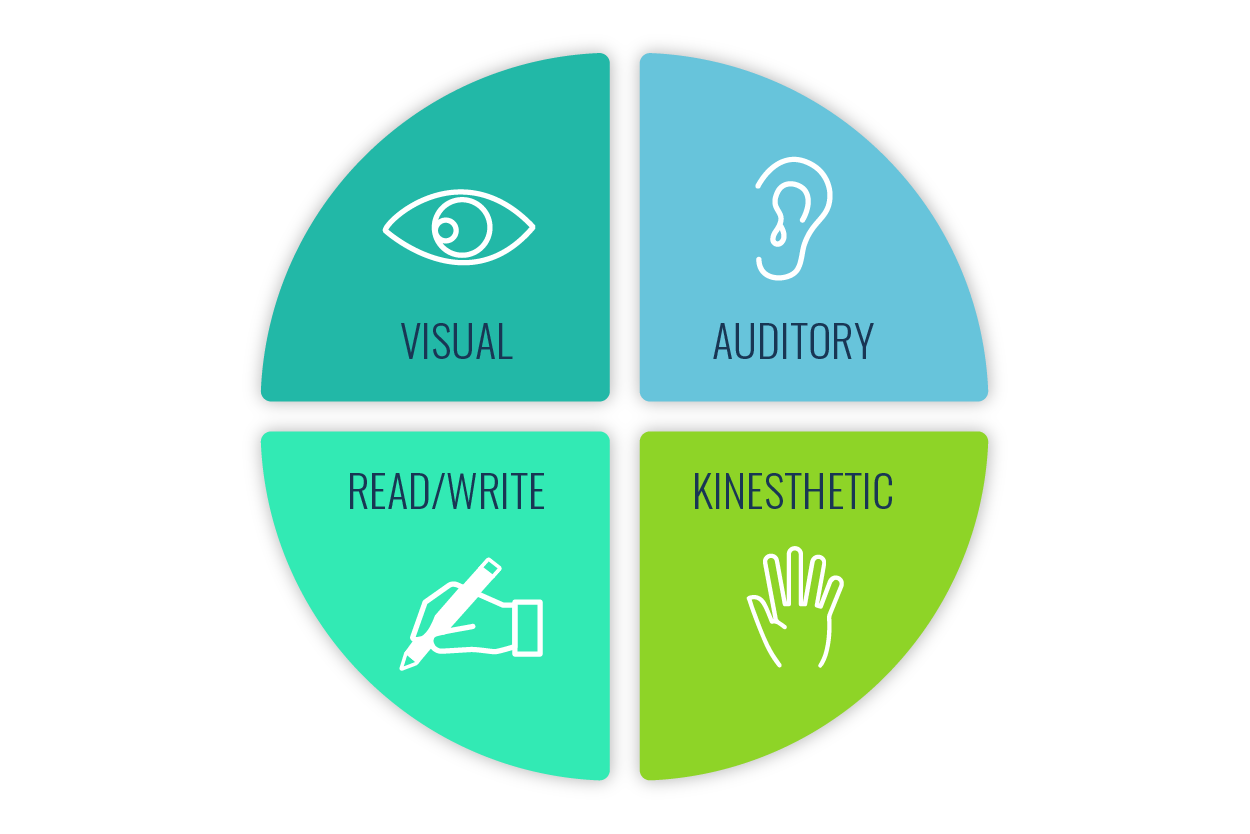
What it doesn’t suggest, however, is that these preferences inform learning outcomes. Indeed, the idea of learning styles is not without controversy. Put simply, it is not well supported by evidence.
That said, the model does help us to think through the different ways learners receive information. Indeed, it gives us a platform to think about our strengths and weaknesses in different areas of perception.
Let’s break down the acronym:
- Visual: This learner type prefers to use videos, images, charts, graphs and other visual aids to process information. They like to see and observe.
- Auditory: This learner type prefers lectures, discussions and verbal instructions. They benefit from discussing concepts with others.
- Reading / Writing: This learner type prefers to read, take notes and engage in written and text-based activities.
- Kinesthetic: This learner type prefers to participate in hands-on experiences and physical activities. Active engagement is the order of the day.
6. The 70:20:10 Model
Recentering informal learning experiences…
The 70:20:10 Model helps learning professionals to understand how we take in information from the world around us. As a result, it can help us to plan and prioritise our training initiatives accordingly.
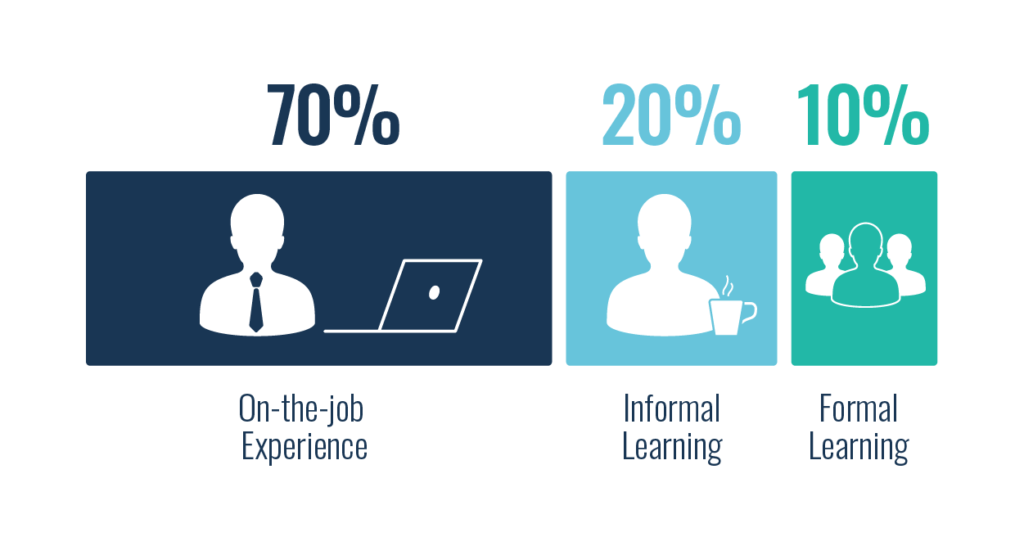
The model was created in the 1980s by Morgan McCall, through a survey launched for the Centre for Creative Leadership. Their research found that:
- Only 10% of what we learn happens through formal training. That’s things like pre-set curricula, classroom events, dusty textbooks and so on.
- 20% of what we learn happens through developmental relationships. In other words, through a social context between two or more people.
- And a whopping 70% of what we learn happens through on-the-job experience. This is a significant slice of the overall learning pie.
Accordingly, this information helps us to understand where we should apply our focus. Relying too heavily on formal training interventions will slow you down. Instead, you should create an environment where informal, social and experiential learning thrive.
7. The Hook Model
Habit-forming hooks that deliver behaviour change…
The Hook Model, as formulated by author Nir Eyal, is a four-phase process for creating new habits. Understanding this process can help us to drive behaviour change.
After all, when an activity becomes habitual, we start to do it automatically and without too much thought. Imagine what you could achieve if you turned learning into a habit?
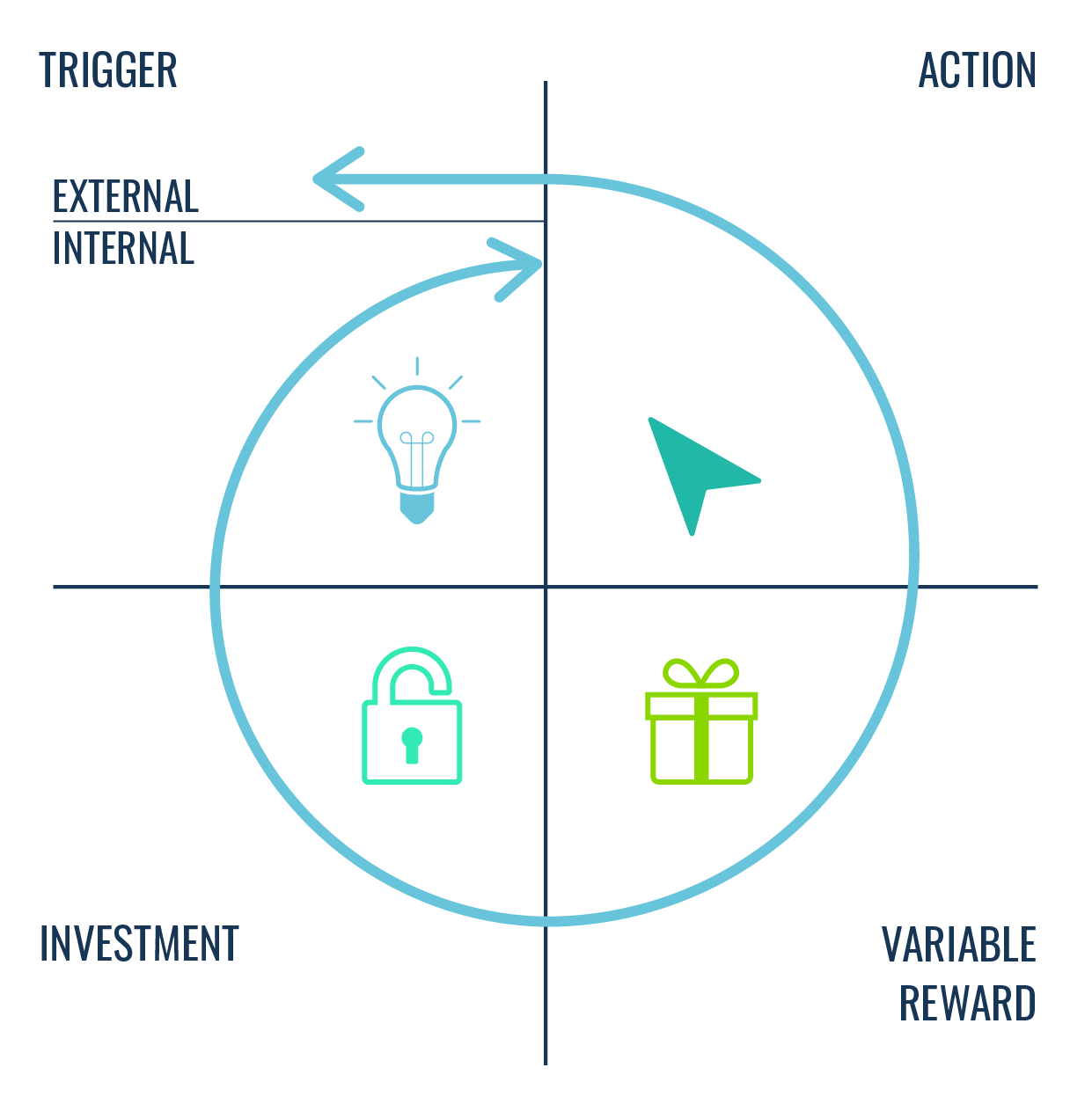
The Hook Model shows us that there are four steps required to forge a new habit:
- Trigger: A prompt to action. This could be an external trigger (for instance, an email) or an internal trigger (for instance, a craving).
- Action: The desired behaviour. In other words, the act prompted by the trigger.
- Variable Reward: A reward for completing the activity or displaying the right behaviour. By varying the reward you are appealing to your learners’ innate sense of curiosity.
- Investment: By moving through the first three steps, your learners are making a time and effort-based investment into the hook cycle.
This investment makes it easier to go through the hook cycle again (and again). After all, your learners have already made a commitment of sorts. If they repeat the cycle enough, then voila: a new habit will have been formed!
8. The Socratic Method
Unveiling truth one question at a time…
The Socratic Method is a learning methodology that uses questioning to stimulate critical thinking. Adopting this method turns conversations into a cooperative dialogue or an argument that’s designed to drive genuine insights.
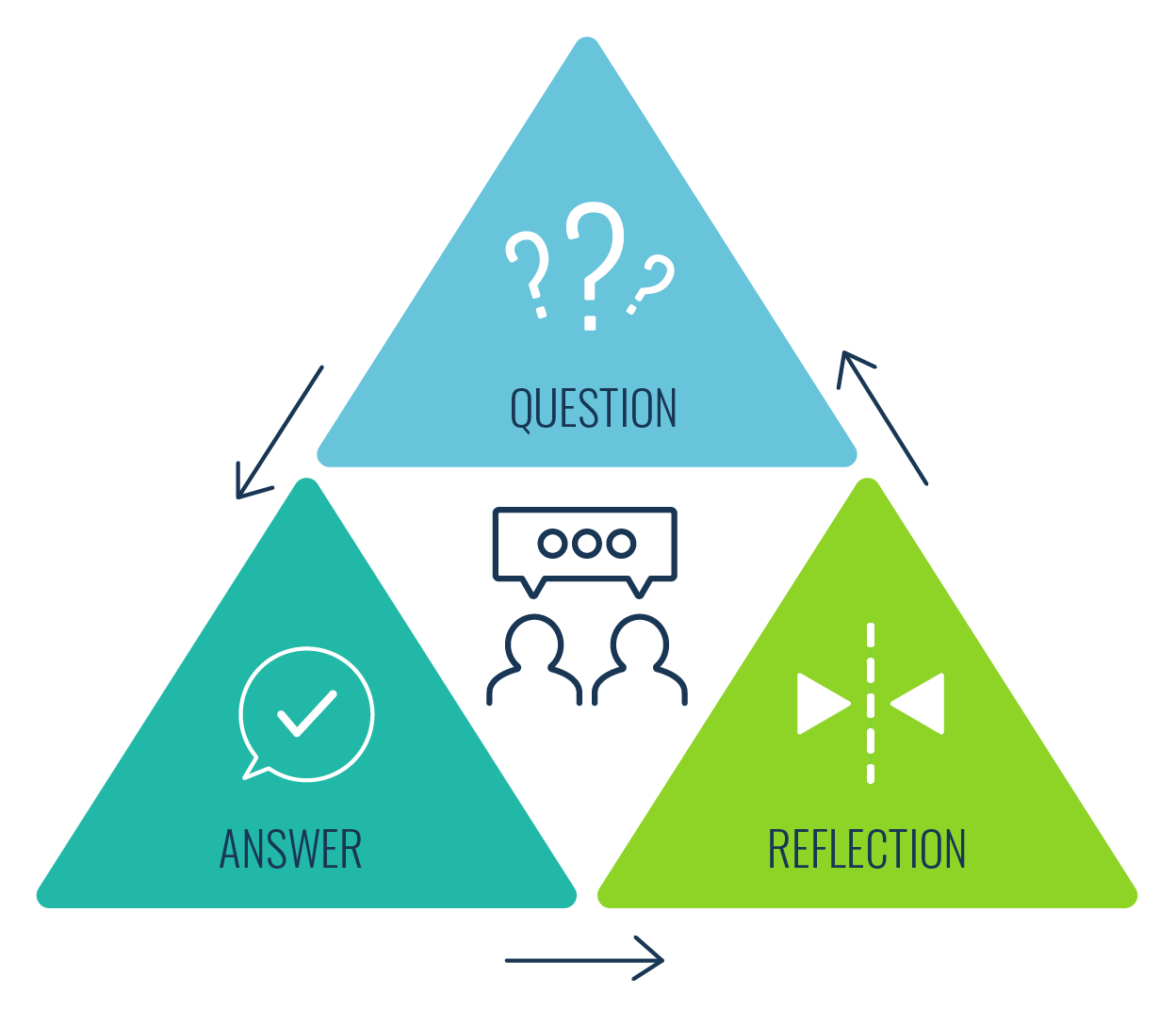
As you might have guessed, it’s named after the ancient Greek philosopher Socrates. After all, the Socrates that was portrayed in Plato’s dialogues was known for his relentless pursuit of truth through questioning and critical thinking.
The key features of the Socratic Method include:
- Questioning: Rather than directly stating facts, this methodology uses questions to guide the learner. This helps them to explore new ideas and uncover contradictions.
- Dialectical Process: Learning takes place in the form of a back-and-forth dialogue, or a dialectic. Specifically, the result is a series of questions and responses.
- Critical Thinking: By focusing on questioning and thoughtful dialogue, the Socratic Method encourages learners to turn information over in their mind.
- Cooperative Learning: The Socratic Method is a coordinated dance between two or more partners. It focuses on working collaboratively to seek meaningful insights.
- Inductive Reasoning: Questioning guides the learner to draw connections and identify implications based on specific principles and examples.
9. BJ Fogg’s Model for Behaviour Change
Tiny habits that drive big transformations…
All learning initiatives worth their salt have a common goal in mind: behaviour change. Unfortunately, this is no easy task. It’s much easier to stick with what we know than it is to embrace new approaches.
That’s where BJ Fogg comes in. Back in 2009, he and his team at the Persuasive Technology Lab at Stanford University published a practical framework. In short, this framework shows us how to drive behaviour change throughout an audience.
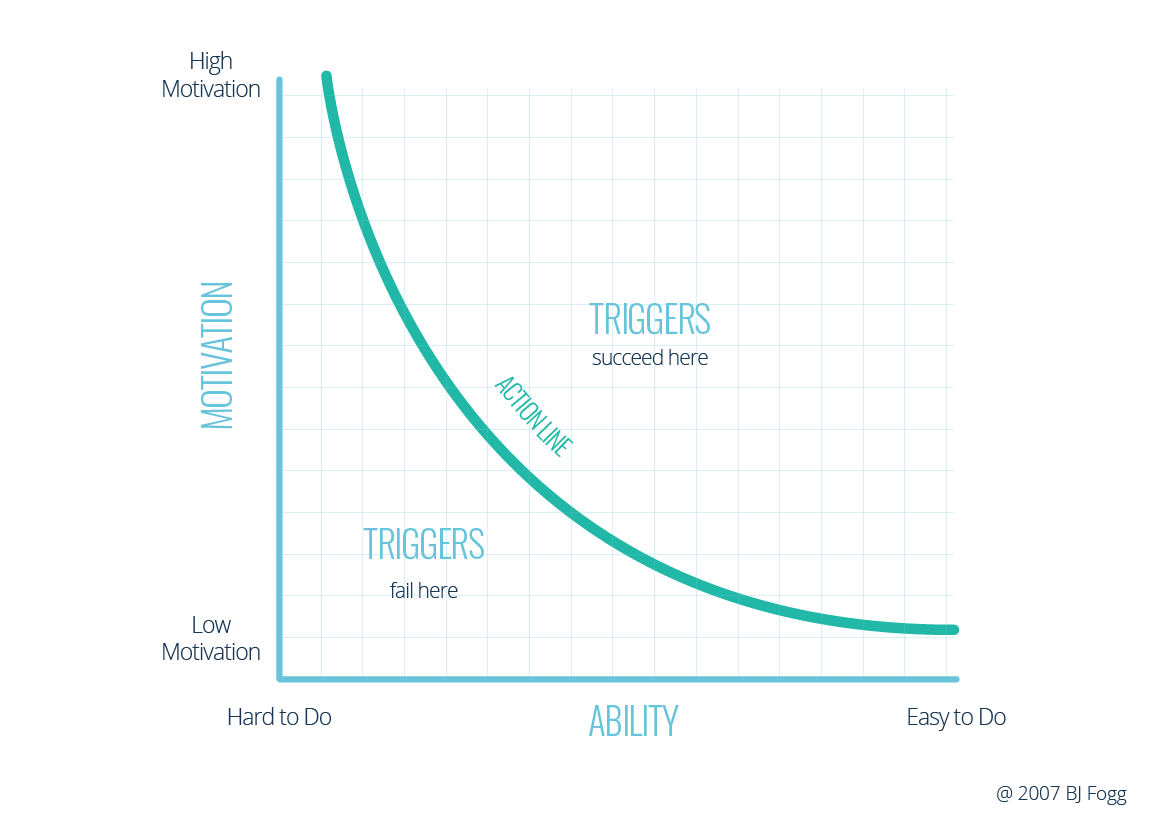
This learning model suggests that behaviour change requires three things:
- Motivation: We must understand the benefits relating to the action or new behaviour. This, in turn, must make us want to act.
- Ability: We must be able to complete the action. Time, money and physical effort may act as detractors here.
- Trigger: The final piece of the puzzle requires prompting your learners to spring into action.
This model can be presented as a helpful equation: B = MAT. If your learners have the motivation and the ability to complete an activity, then all they’ll need is the right trigger.
10. Edgar Dale’s Cone of Experience
Moving from experience to expertise…
Edgar Dale first introduced his Cone of Experience (aka. The Cone of Learning or the Learning Pyramid) in 1946. It is arguably the most commonly misrepresented and misunderstood learning model on this list.
The cone is an 11-stage model that places multimedia assets into categories based on their ‘concreteness’. By this, we mean their ability to accurately capture reality.
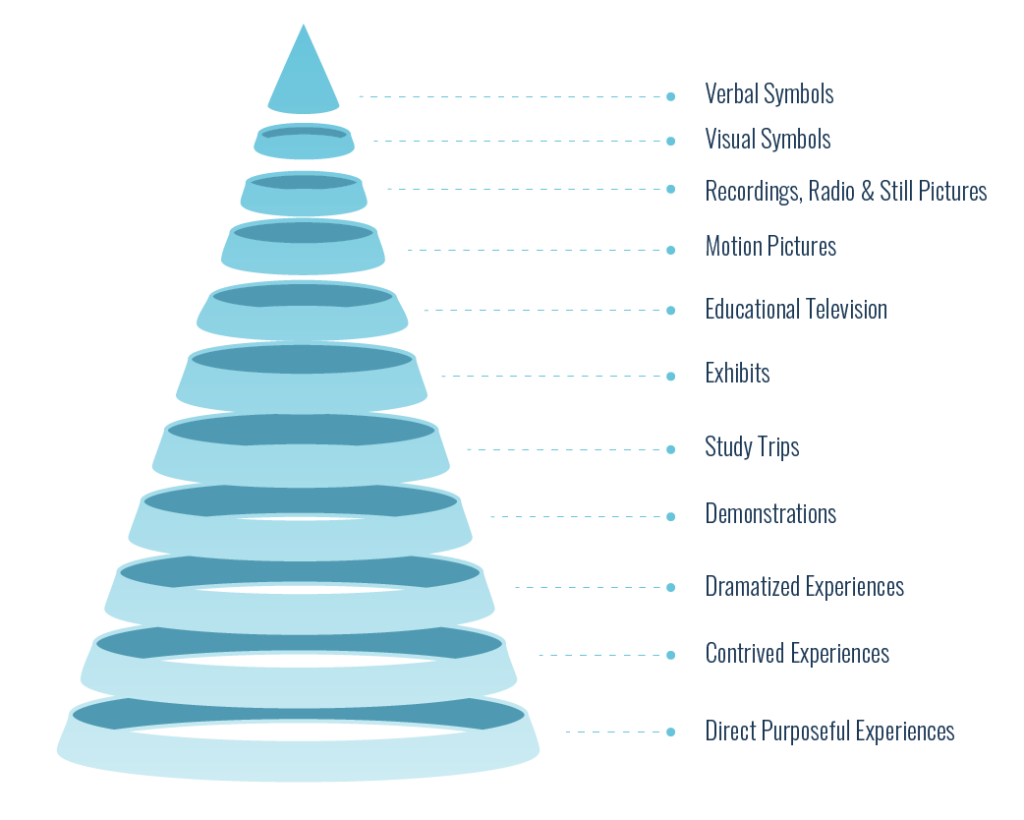
Regrettably, the cone has been distorted over time, with imaginary retention scores superimposed onto the model. You’ve probably heard that you ‘remember 10% of what you read’, ‘20% of what you hear’ and so on. This is bogus.
This model is a simple showcase of how sensory data is lost across different learning experiences. The levels are organised in a cone shape, with the more concrete experiences at the base, and the more abstract and passive experiences at the top.
- Direct Purposeful Experiences: Firsthand real-world experiences that involve the learner.
- Contrived Experiences: Situations or scenarios designed to drive learning outcomes.
- Dramatised Experiences: Role-play situations or dramatisations that simulate real-life experiences.
- Demonstrations: Presentations that showcase a concept or a process step-by-step.
- Study Trips: Educational field trips or visits that enhance learning through direct observation.
- Exhibits: Interacting with displays or exhibits to help further learner understanding.
- Educational Television: Using TV or video as a means to convey educational content.
- Motion Pictures: Incorporating films or video to communicate your message.
- Recordings: Using audio recordings or podcasts to deliver educational content.
- Visual Symbols: Engaging with visual representations such as charts, graphs or diagrams.
- Verbal Symbols: Using words to convey information, ideas or concepts.
11. Kirkpatrick’s Training Evaluation Model
Unlocking new levels of insight…
The Kirkpatrick Training Evaluation Model is a popular framework that is used to assess the effectiveness of training programmes. It was developed by Donald L. Kirkpatrick in the 1950s. Its influence remains strong today.

This learning model consists of four levels, each representing a different aspect of evaluation.
- Level 1 – Reaction: At this level, you’re assessing your learners’ immediate reactions and feelings about your training. You’ll need to gather their feedback on your training content, your instructors and the overall learning experience.
- Level 2 – Learning: By this stage, you’re assessing whether your learners have acquired new knowledge or skills as a result of your training. You’ll need to use quizzes, tests and demonstrations to complete your evaluation.
- Level 3 – Behaviour: At level three, you’re assessing whether your learners are applying their newfound knowledge and skills in the workplace. To do this, you’ll need to conduct observations and performance reviews.
- Level 4 – Results: This is the pinnacle of Kirkpatrick’s model. Here you’re assessing the impact of your training against organisational objectives. You’ll be looking for improvements in key performance indicators and assessing your ROI.
As you can see, each level is sequential, with each stage laying the foundation for the next. Whilst training evaluation can be difficult, Kirkpatrick’s model gives us a simple structure to follow that helps to illuminate the tangible impact of our training efforts.
12. Gagne’s Nine Levels of Learning
Your blueprint for comprehensive learning experiences…
Robert Gagné was an American educational psychologist who helped to pioneer the science of instruction and learning. In 1965, he published Conditions of Learning, which set out the nine steps that learners should experience when they are being taught something.
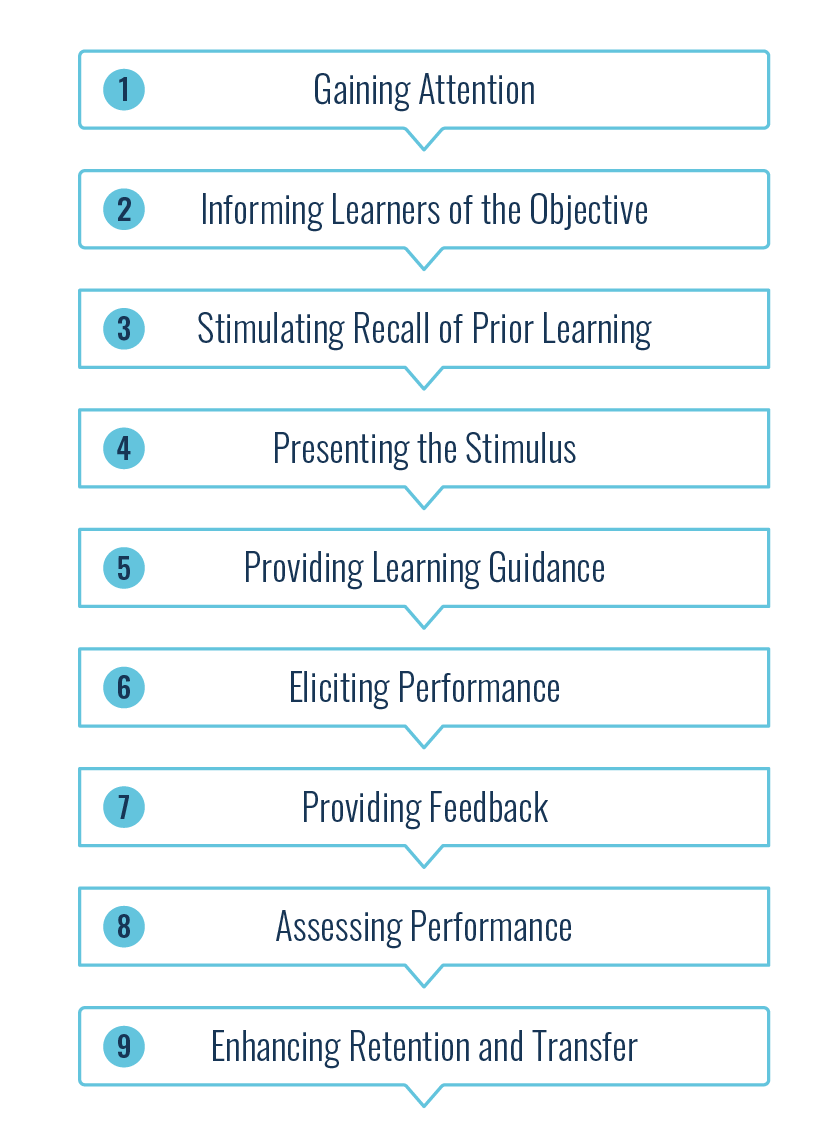
The ‘Nine Levels of Learning’ help trainers and educators to structure their learning materials in the right way. In addition, the model provides a framework for creating instructional activities and a way of thinking about learning progress.
Let’s breakdown the nine steps involved:
- Gaining attention: You can’t teach someone anything if they’re not paying attention.
- Informing learners of the objective: Establish what the learning intervention will cover.
- Stimulating recall prior to learning: Ask the learner to reflect on their previous experiences relating to the subject matter.
- Presenting the stimulus: Present the learner with new information relating to the learning objective.
- Providing learning guidance: Reinforce the information presented with alternative approaches.
- Eliciting performance: Get your learners to demonstrate their newfound knowledge.
- Providing feedback: Communicate any feedback necessary to help your learners to improve.
- Assessing performance: Test your learners’ knowledge and understanding.
- Enhancing retention and transfer: Show your learners how they can apply their knowledge to different contexts and situations.
Final Word
If you’re new to the world of instructional design or learning models and theories, you may be feeling overwhelmed. There are an endless number of learning models to explore and approaches to consider. It can be difficult to know where to apply your focus.
We’d recommend starting with your audience. After all, you can’t design an effective training experience if you don’t understand the needs of your learners. Once you have this knowledge, you can then alter and fine-tune your approach accordingly.
Perhaps you’ll decide to use the ADDIE framework to develop your content. Maybe you’ll focus on combatting The Forgetting Curve by using campaign learning. If motivation becomes an issue, you could look to BJ Fogg’s Model for Behaviour Change.
Either way, you’ll be building on insights from some of learning’s brightest minds and utilising models that have stood the test of time. That sounds like a good starting point to us.
Thanks for reading. Still hungry for more influential learning theories and models? Download our white paper, ‘Using Learning Theories and Models to Improve Your Training Strategy’ now!

